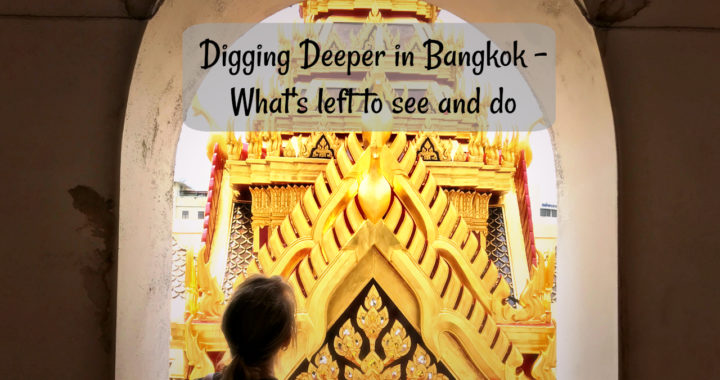So you visit Bangkok and you tick off all the tourist highlights which will keep you occupied during your stopover on the way to or from your holiday destination.
These will more than likely include ‘The Top 10 Tourist Destinations’ and possibly cost you some serious coin as is the case with most of the popular hotspots. These will include The Grand Palace, Floating Markets, Train Markets, Chatuchak Market, mega shopping malls and The Reclining Buddha at Wat Pho.
So What’s Left to Visit
We have the luxury of a 6 week stay put whilst House/Cat sitting in the Huai Khwang District.
This gives us the chance to recharge, reset, restock and repack after spending a few weeks on the road. It also gives us the opportunity to ‘dig a little deeper’ and really uncover some hidden (and cheaper) gems that exist in Bangkok and beyond.
We did find quite a few attractions to visit, some of which are still to be included in a future blog but here is a quick reference with links to websites for further information for those included in this update. Otherwise keep reading to find out how we discovered them.
How we do it on the Cheap
Public Transport
Don’t get bogged down by using just taxi’s to get around Bangkok. Firstly, you will get nowhere fast as the roading network is choked most times during the day. If you are sitting in a metred taxi, you will watch the price tick over whilst you are sitting there staring at the bumper of the car in front of you.
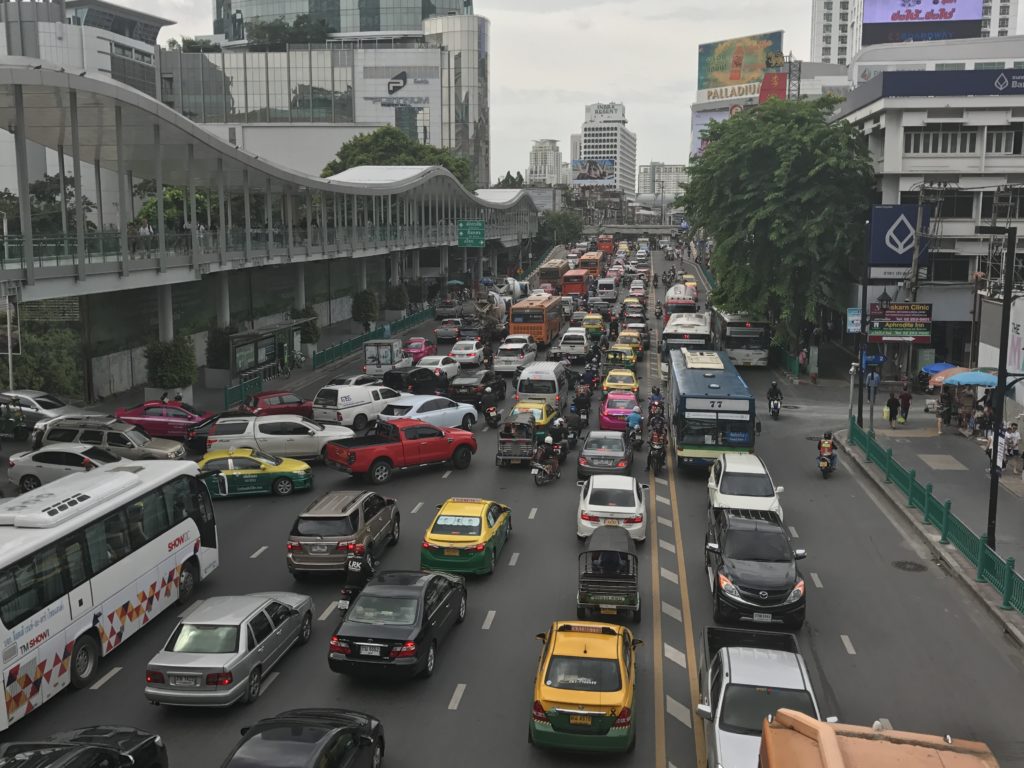
Every hour is Rush Hour
If you do need to go somewhere by car then we’d recommend Grabtaxi or Grabcar. We have never had any issues, it’s easy, fixed price which you agree to before accepting the ride and you can track their eta. Of course this is only useful whilst on wifi. We usally purchase a local SIM card for internet access.
Train System
It is well worth doing the research and sometimes ‘trial and error’ to master the complex train system.
Where it gets confusing is that there are at least 3 different train lines and unfortunately you have to pay separately to use them. Unlike Kuala Lumpur they are not linked.
The MRT (subway), BTS (Sky Train), SRT (Sky Train to Airport) have various payment options. You can pay as you go, working out the fare at the ticket machines or at the Ticket Office. You can also get an unlimited ride pass on the BTS or purchase cards that can be topped up at the Ticket Office.
Our hosts left us their BTS and MRT cards so we were able to just top them up as we used them which made it a lot easier.
Canal and River Boats
For both canal and river boat transport you have the choice of a ‘hop on hop off’ tourist boat or you can travel like a local for a fraction of the cost. However using the extensive network of boats and ferries might appear complicated and requires research.
Rather than trying to explain the many options click here to read more about it.
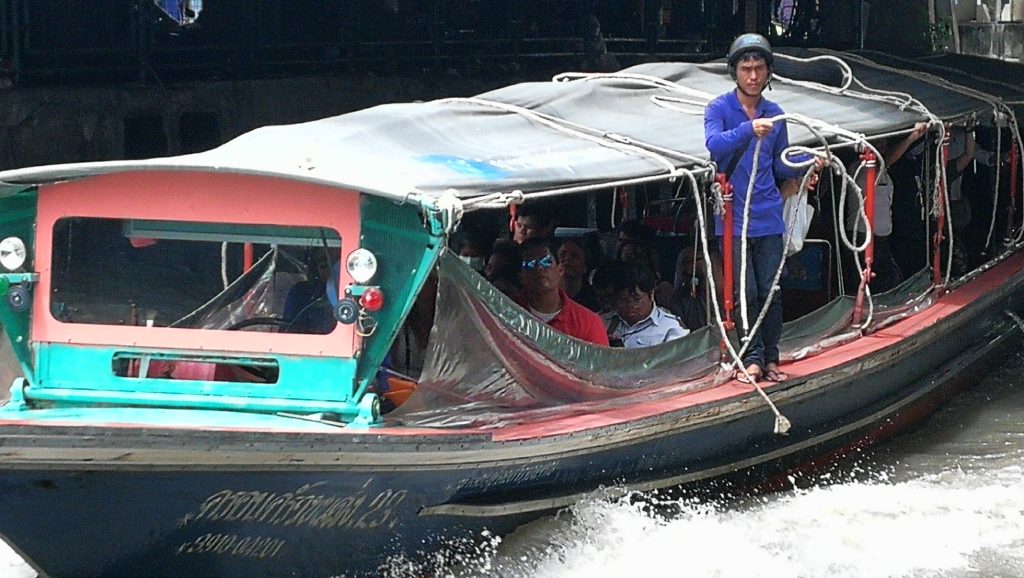
Keep your mouth shut to make sure you don’t swallow canal water
Catching the Khlong Saen Saep boats can be a little harrowing and be prepared to climb over the outer edge as people quickly jump on and off in controlled chaos. Once you are on-board there are brave conductors walking around the outer rims of the boat to collect fares as passengers pull up plastic sheets to keep water out of the boat.
We paid around 8-10TBH each for the local boat transport where you can pay up to 200THB ($8nz) each for the tourist option. Don’t get me wrong, this is still a good option if you want to stop off at the many attractions along the way and make it an all day affair. Still a cheap and interesting way to travel around Bangkok. It certainly offers you a different view of the city.
The Giant Swing
A replica of the Giant Swing which was constructed in 1784 stands in front of the Devasathan Shrine. It was used in religious ceremonies where groups of daring men used the teak poles as a slingshot to attempt to reach a bag of gold coins that would be hung at heights of around 50 feet. Many of course did not make it and resulted in numerous accidents and deaths. The ceremony was stopped in 1935 after several fatal accidents.
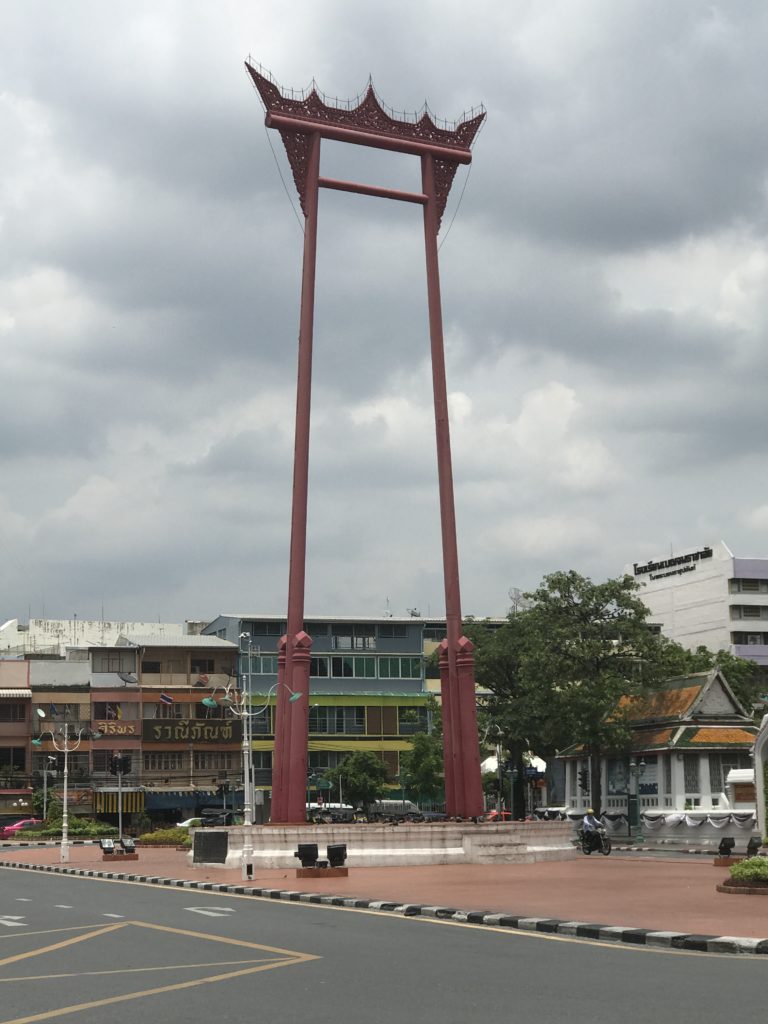
Possibly one of the world’s first sling shots
Although this is not the original swing, it still gives you a good idea of the scale of the structure and stands proudly at the entrance to the neighbouring Shrine.
Jim Thompson House Museum
We really had no intention of visiting Jim Thompson House Museum but when there is a sign staring at you at the nearest BTS station at National Stadium, you should always divert as you never know what you are going to find (only a 500 metre walk).
Jim Thompson was an American who decided to make Thailand his home after WW2. He had a natural flair for design and colour and gained worldwide recognition for his success in rebuilding the Thai Silk Trade.
During a holiday in the Cameron Highlands, Northern Malaysia in 1967, he went missing and was never found. An extensive search failed to reveal any clues about his disappearance.
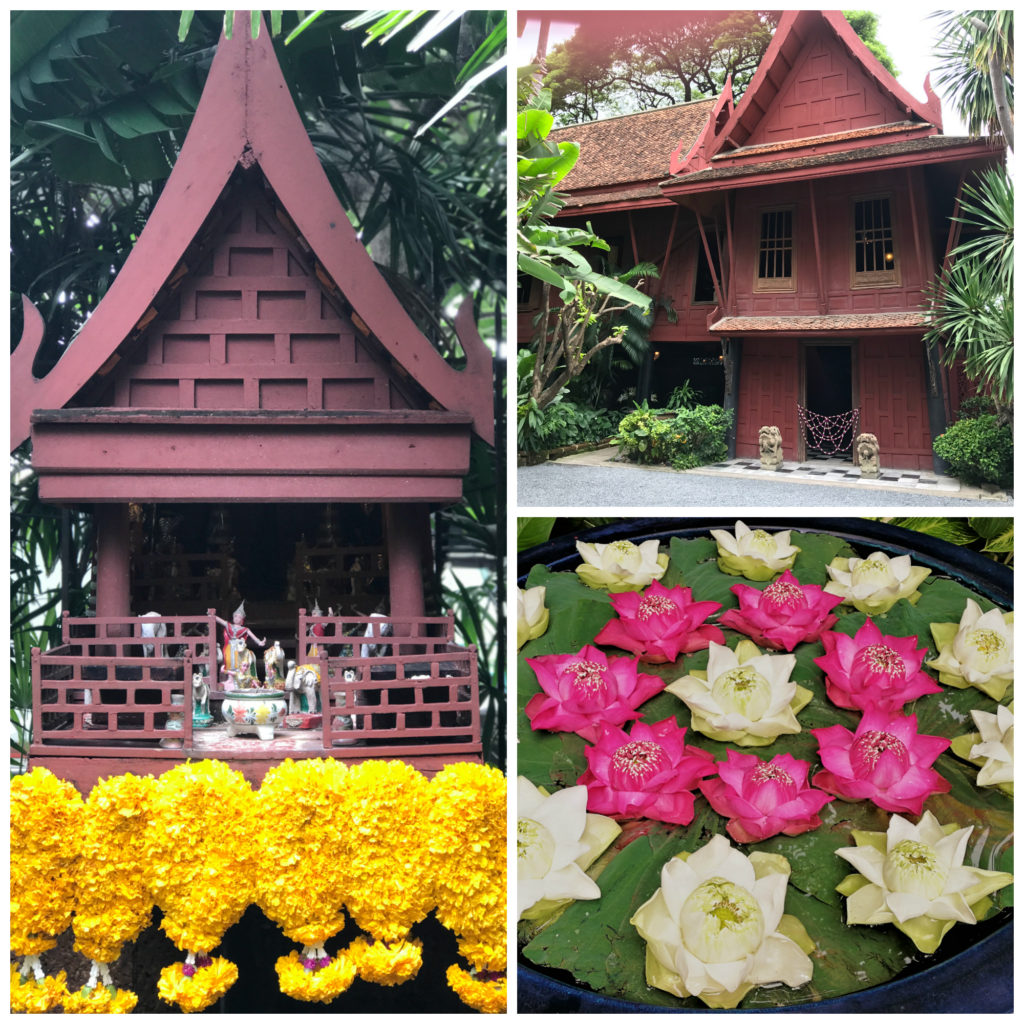
A lovingly restored legacy
The house consists of a complex of six Thai-style houses, teak structures that were purchased from several owners and brought to the present location from various parts of Thailand. Construction of the Thai house was completed in 1959.
It remain largely untouched and it appears that Jim just popped out for a quick shop. The home is full of amazing antiques, artwork and lavishly furnished.
A guided tour will cost 150THB ($6nz). The groups are small and run regularly throughout the day. Click on the link above for opening hours and further information.
Snake Farm
We normally steer clear of zoos or anything that promotes itself by keep animals and reptiles in captivity but upon doing further research it appeared that this facilities primary focus is on not only education for public, tourists, schools and university students but they milk the snakes to collect venom to be used in vaccines post snake bites.
The Snake Farm at the Bangkok Red Cross is well set up and there are many terrariums, exhibitions, museum and snake handling demonstrations. You can wander the grounds and inside the newly completed complex and view both live and preserved snakes. There are over 35 species of living snakes and a 100 seat arenas for venom extraction.
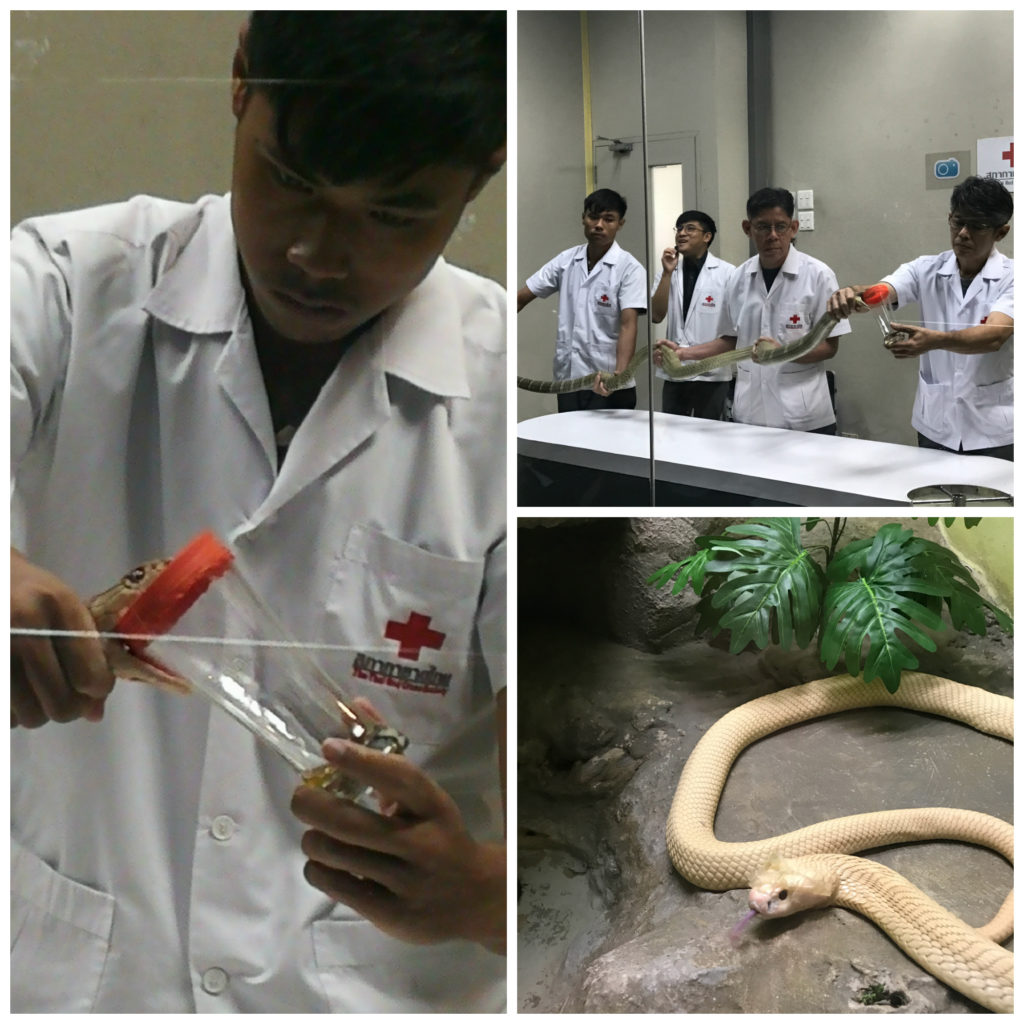
Did I say I don’t like snakes!!
Venom Extraction 11am and Snake Handling 2.30pm. Entrance fee 200THB ($8nz) each. Click on link above for more information and opening hours.
Lumpini Park
When the crazy roads and crowded malls and streets get too much, then escape to the green oasis of Lumpini Park, 142 acres in the heart of the city.
Established in the 1920’s Lumpini occupies some of the most prime real estate in all of Thailand. It is easily accessible from Silom MRT station, Lumpini MRT station or Sala Daeng BTS station. It is also just 5-10 minutes from a handful of major Western embassies, some of Bangkok’s most luxurious hotels and the glitzy malls of Siam Square.
Not including a 40THB swan-boat ride around the park’s large human-made lake, Lumpini is entirely free.
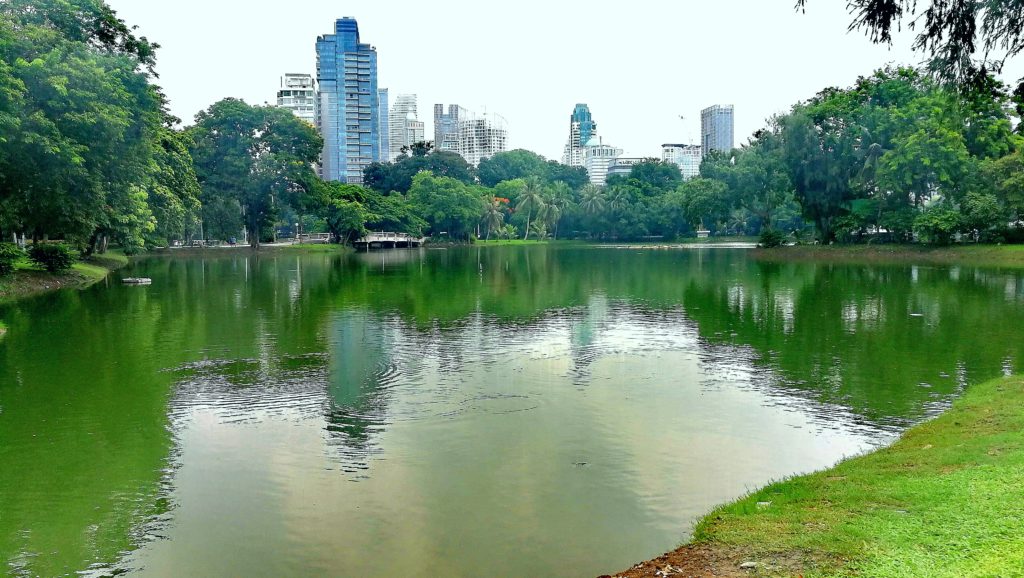
A quiet, serene escape in the city
If it’s Temples (Wat) You’re After……
You are spoilt for choice when it comes to visiting Wats. Some of them you need to pay to enter but there are free or cheaper options on offer. They are often less visited but no less impressive.
Here are a few of the temples we called into on our travels around Bangkok.
Wat Saket – Temple of the Golden Mount
With a 20THB ($0.80nz) each entry, The Temple of the Golden Mount makes it a great destination to visit. Built on an artificial man-made hill, it is the temple’s most well-known landmark.
To get to the top requires a climb up some 300 steps which winds it’s way around the chedi (temple top). The path is well-paved and the climb is relatively easy if you avoid going between midday and 2pm or during peak summer months.
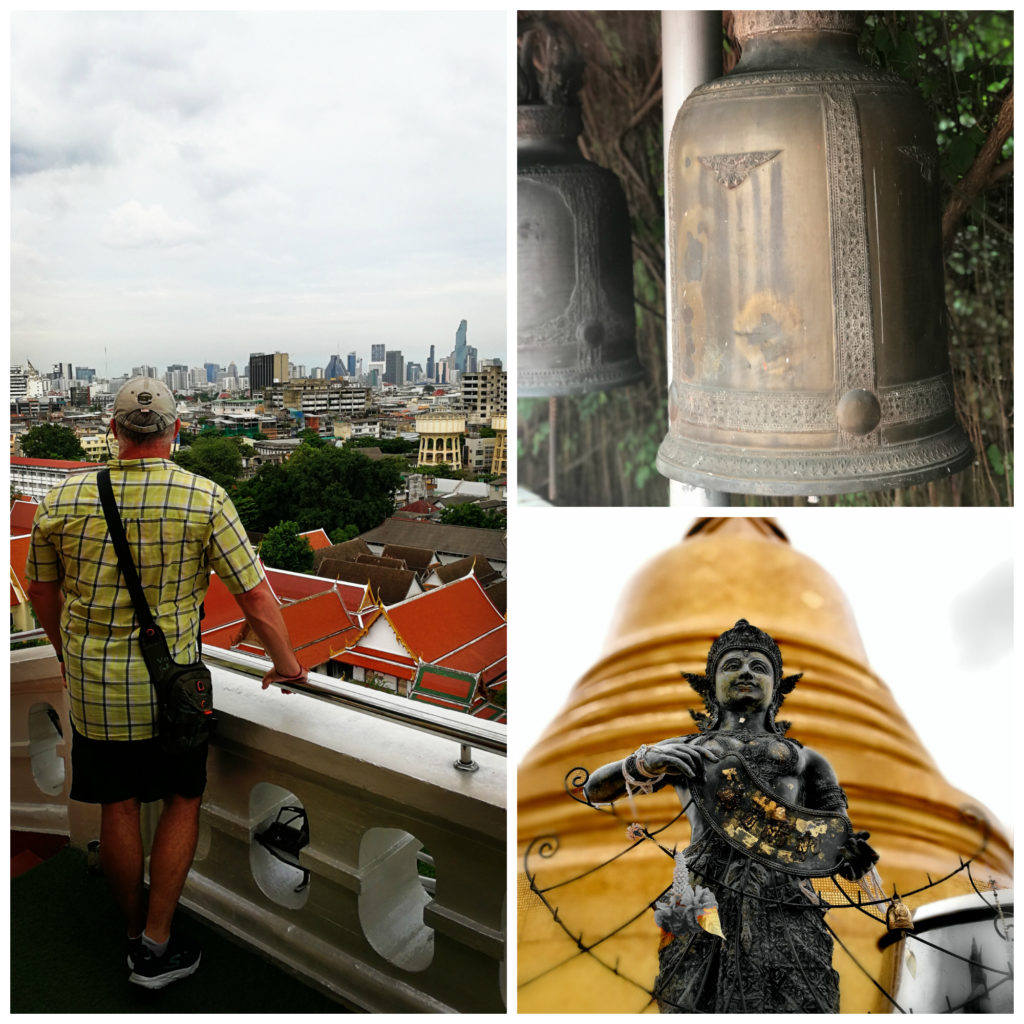
Well worth the climb to the top
At the top you will be welcomed by a wall of bells and panoramas of historic Bangkok. Another interesting fact is that Wat Saket was that in the late 18th century, it served as the capital’s crematorium and dumping ground for some 60,000 plague victims.
Loha Prasat Temple
We stumbled across Loha Prasat Temple and so pleased we did. This temple is one of the most unique temple structures in Bangkok and is a copy of an old style Buddhist structure found in Sri Lanka. It is the only example of this construction and design in the world.
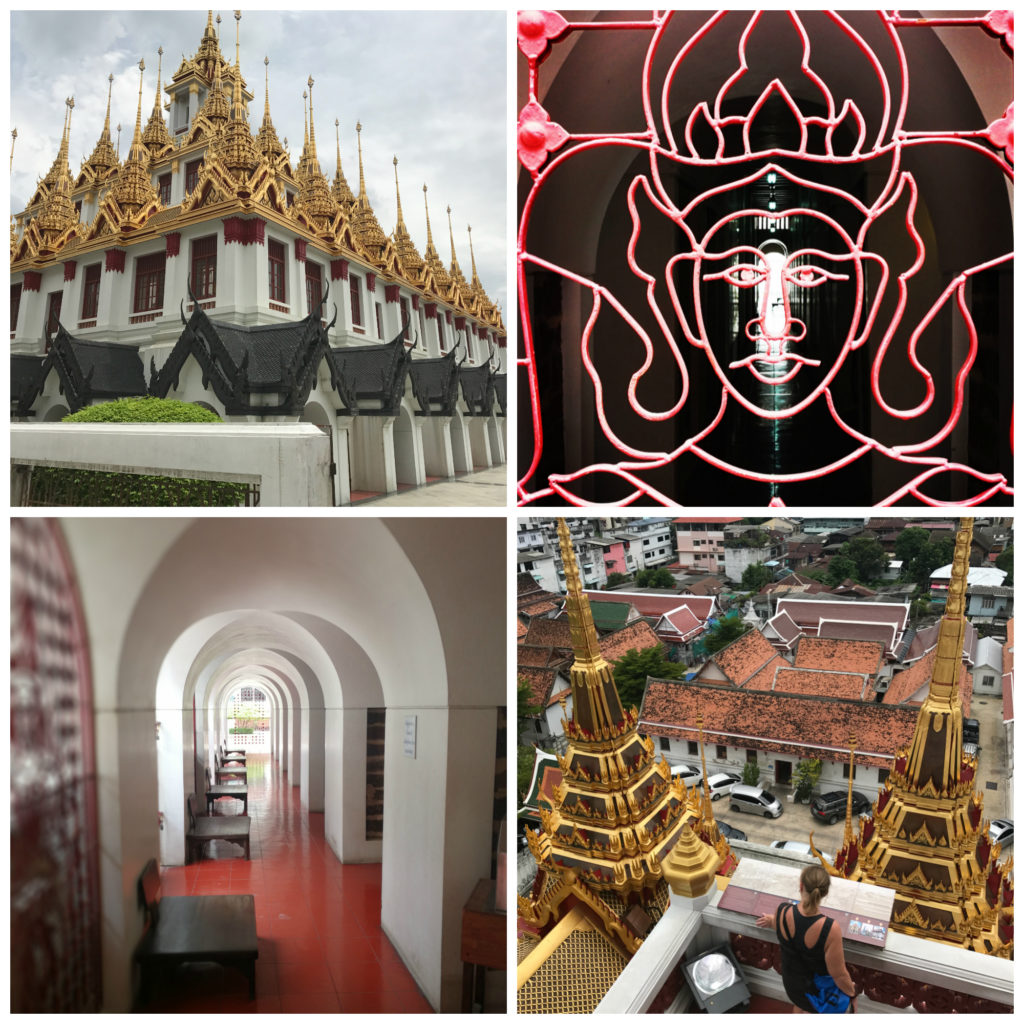
One of its kind in the world makes this temple pretty special
Construction started in the early nineteenth century but only recently completed which means it took only 160 years to complete!
The prasat itself has five square towers, each taller than the other. The outer, middle and centre towers are capped by cast iron spires, which gives the temple its name – Loha Prasat (Metal Castle).
The spiral staircase winds it’s way up through the centre of the temple and the view from the top offers views across to the many other Wats in Bangkok. Location maps with highlighted photos makes it easy to identify where each one is and gives a good perspective on how many Wats there are in close proximity.
Visitors are requested to make a 20THB ($0.80nz) donation upon entering. Well worth the money and cheap at half the price.
Wat Ratchabopit
About a block from the Grand Palace is the beautiful temple of Wat Ratchabophit. Built in 1869, the temple’s unique design has a large Prayer Hall and Ordination Hall linked by a circular courtyard.
The temple features traditional Thai architecture and Western-style interior, which is probably the only one of its kind in Thailand.
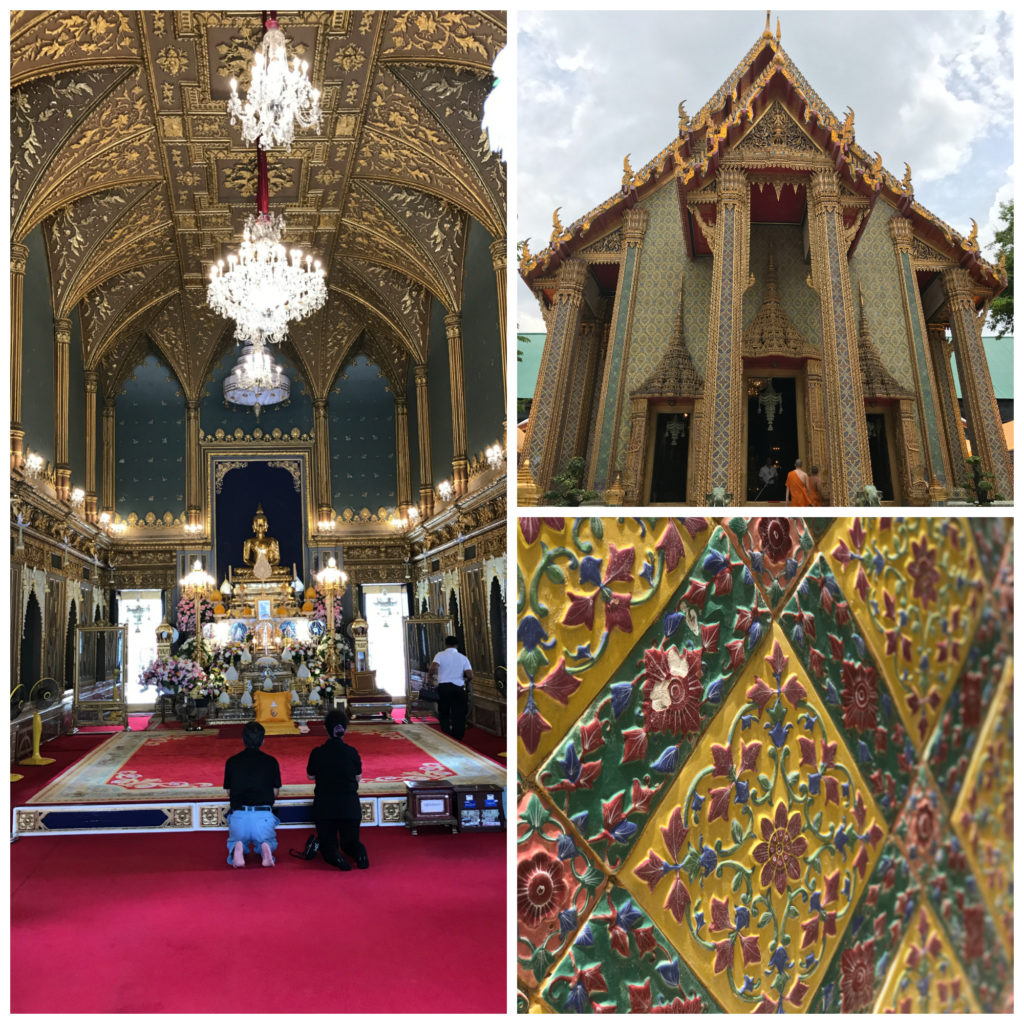
So much detail and so old – just amazing
Buildings were truly beautiful with the most amazing detail inside and out. It was quite serene and we were the only tourists/Westerners wandering around which was a bonus.
The temple is also home to the Royal Cemetery where the ashes of high-level members of Thai royal family, most closely related to King Rama V are contained.
It was free to enter which made this venue a ‘Top Choice’ for us and you won’t be disappointed if this is the only Wat you get to visit.
Bangkok – Much more than a Stop Over Destination
We’ve still got plenty of attractions up our sleeve to check out before we leave this great city. There are still more layers to peel away to reveal more heritage, history and nature.
Video below shows some of our highlights so far.
